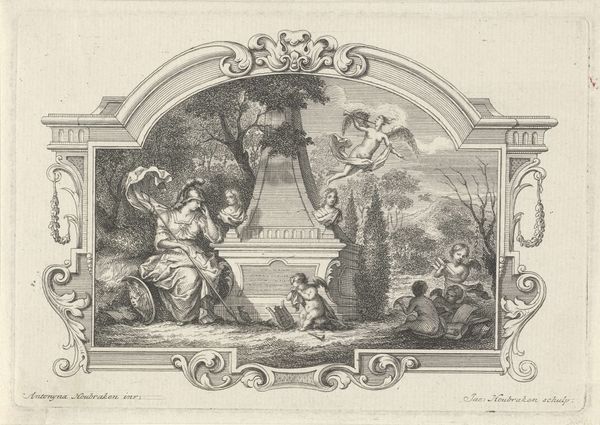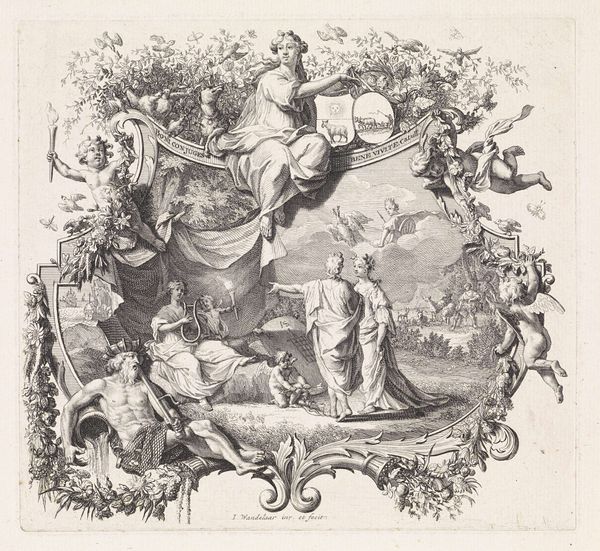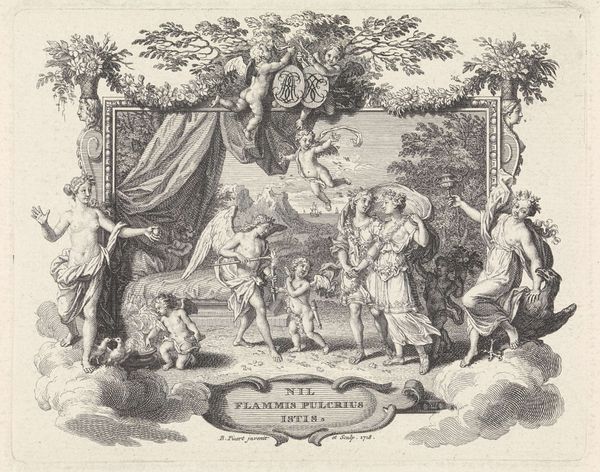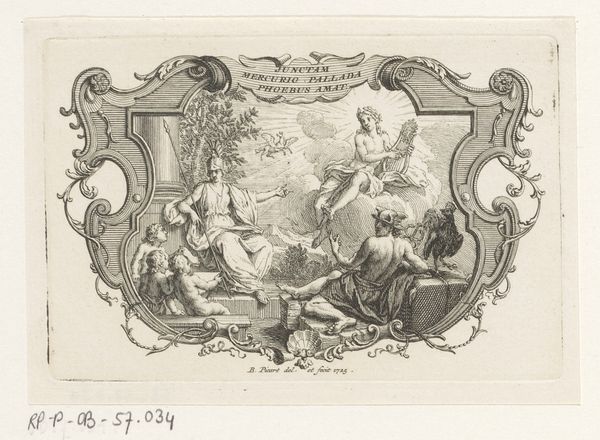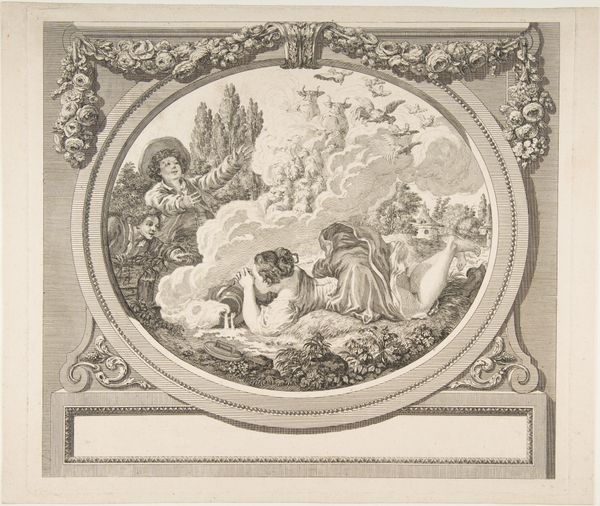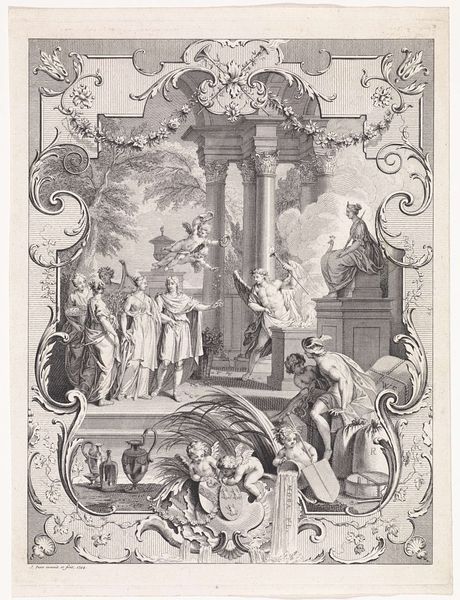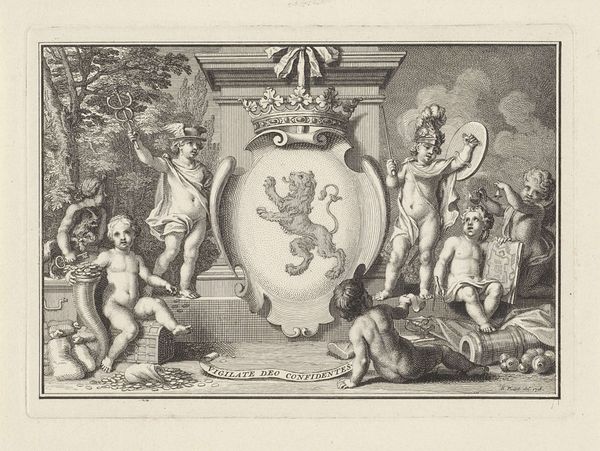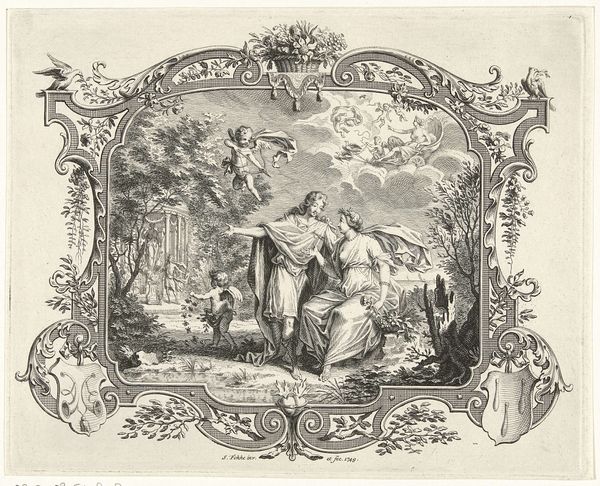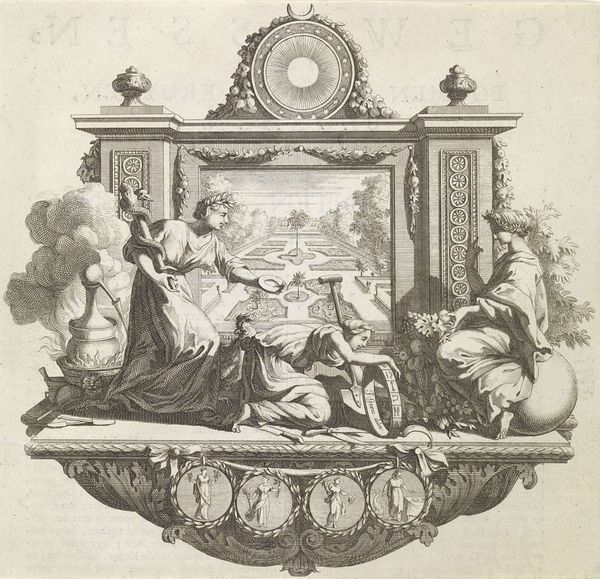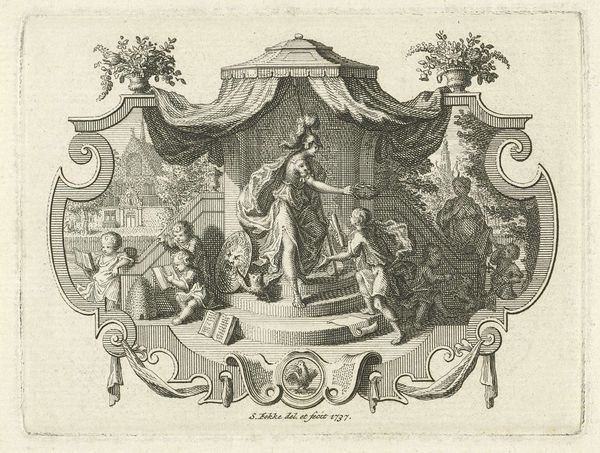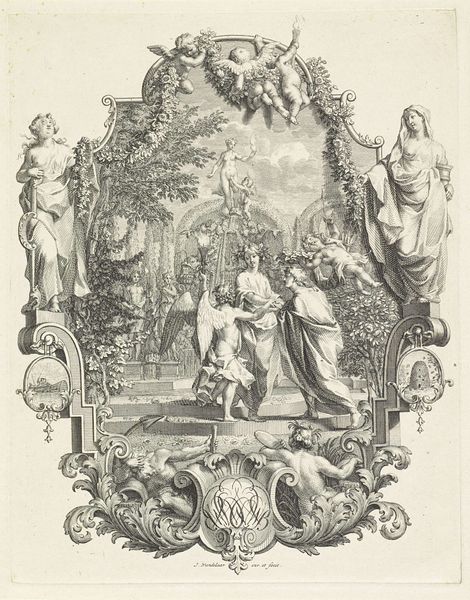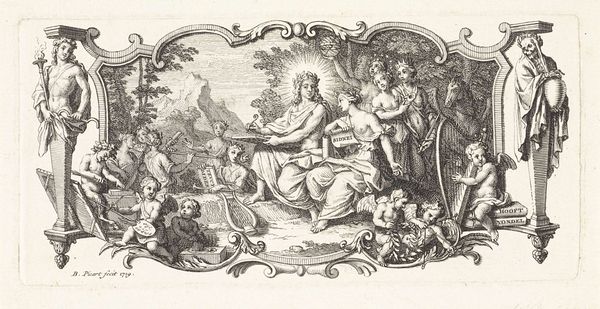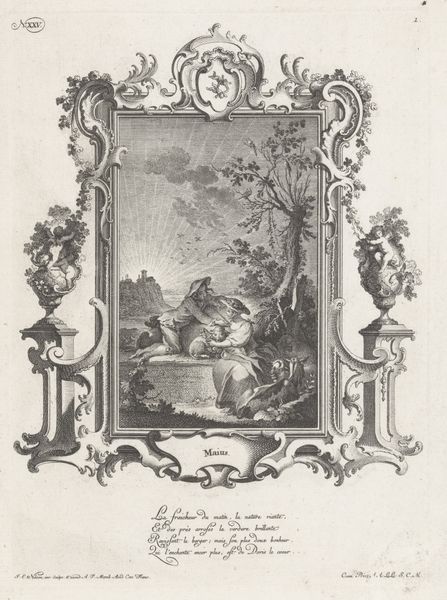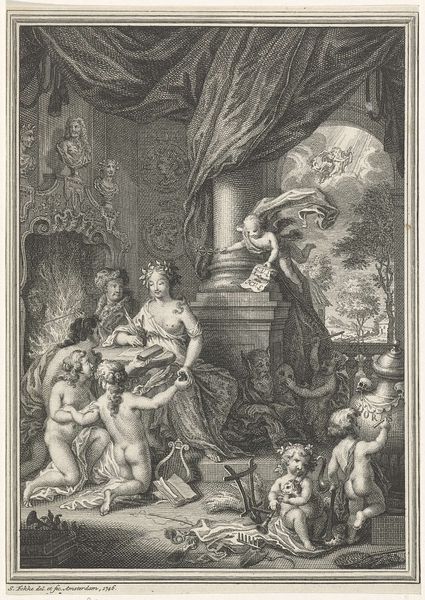
Vignet met figuren op een bank en bij een offerzuil in een landschap 1702 - 1759
0:00
0:00
janwandelaar
Rijksmuseum
print, engraving
#
baroque
# print
#
pen sketch
#
pencil sketch
#
old engraving style
#
landscape
#
figuration
#
line
#
pen work
#
history-painting
#
engraving
Dimensions: height 129 mm, width 148 mm
Copyright: Rijks Museum: Open Domain
Curator: This engraving, "Vignet met figuren op een bank en bij een offerzuil in een landschap," was created by Jan Wandelaar sometime between 1702 and 1759. You can currently find it here at the Rijksmuseum. Editor: It's captivating. The vignettes layered within that elaborate, almost baroque frame, they feel both grand and strangely intimate, like looking into a dollhouse diorama, especially because of all of that pen work that creates such a high level of detail. Curator: Wandelaar’s print offers us a window into the religious and social values circulating during the Dutch Golden Age. We see a clear interest in biblical narratives staged within a classical framework, typical of the period. Note how the idyllic landscape supports the figuration of figures near the offering pillar in a historical painting context. Editor: Yes, and the offering itself… it speaks to a material transaction, doesn't it? It makes me wonder about the types of goods, resources, and maybe even labor, that are being sacrificed—literally fueling this vision of piety. The textures achieved solely through line work is stunning; I am curious to the labour put into creating this single piece. Curator: Indeed. Wandelaar worked during a time when printmaking was increasingly democratized. The availability of such images expanded notions of faith, virtue, and classical knowledge beyond elite circles, shaping public morality and religious identity. Editor: But think about the labor conditions embedded in this engraving. Whose hands were actually etching these fine lines? Who processed the inks, prepared the paper? The finished product romanticizes this scene and perhaps hides labor dynamics from our view. It also appears to take from different narratives creating a collage or remix of meanings for consumption. Curator: Absolutely. Prints like these also functioned within a complex market. Wandelaar's print catered to a growing public appetite for morally instructive art, revealing how art became increasingly enmeshed with market forces and cultural aspirations. This intersection of art, religion, and social status makes this more than a mere illustration; it reflects evolving socio-political relations of the time. Editor: Well, examining its layered making and social distribution certainly enriches how we can unpack the possible purposes of Wandelaar's vignettes within sociopolitical conditions of the 18th century. Curator: It does, offering a great window into how artistic traditions reflected and shaped the public sphere in the 18th century.
Comments
No comments
Be the first to comment and join the conversation on the ultimate creative platform.
